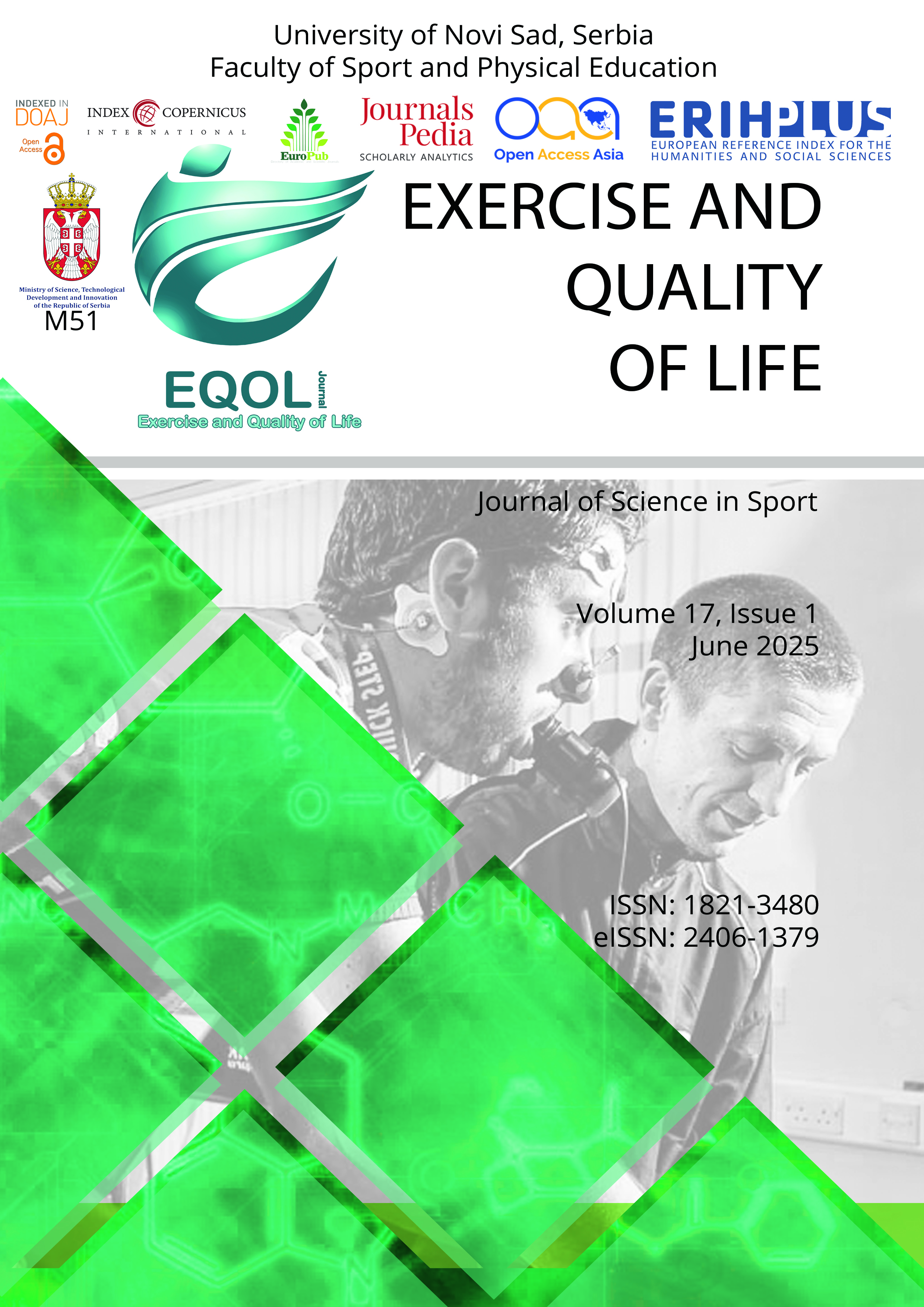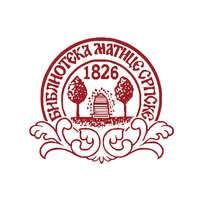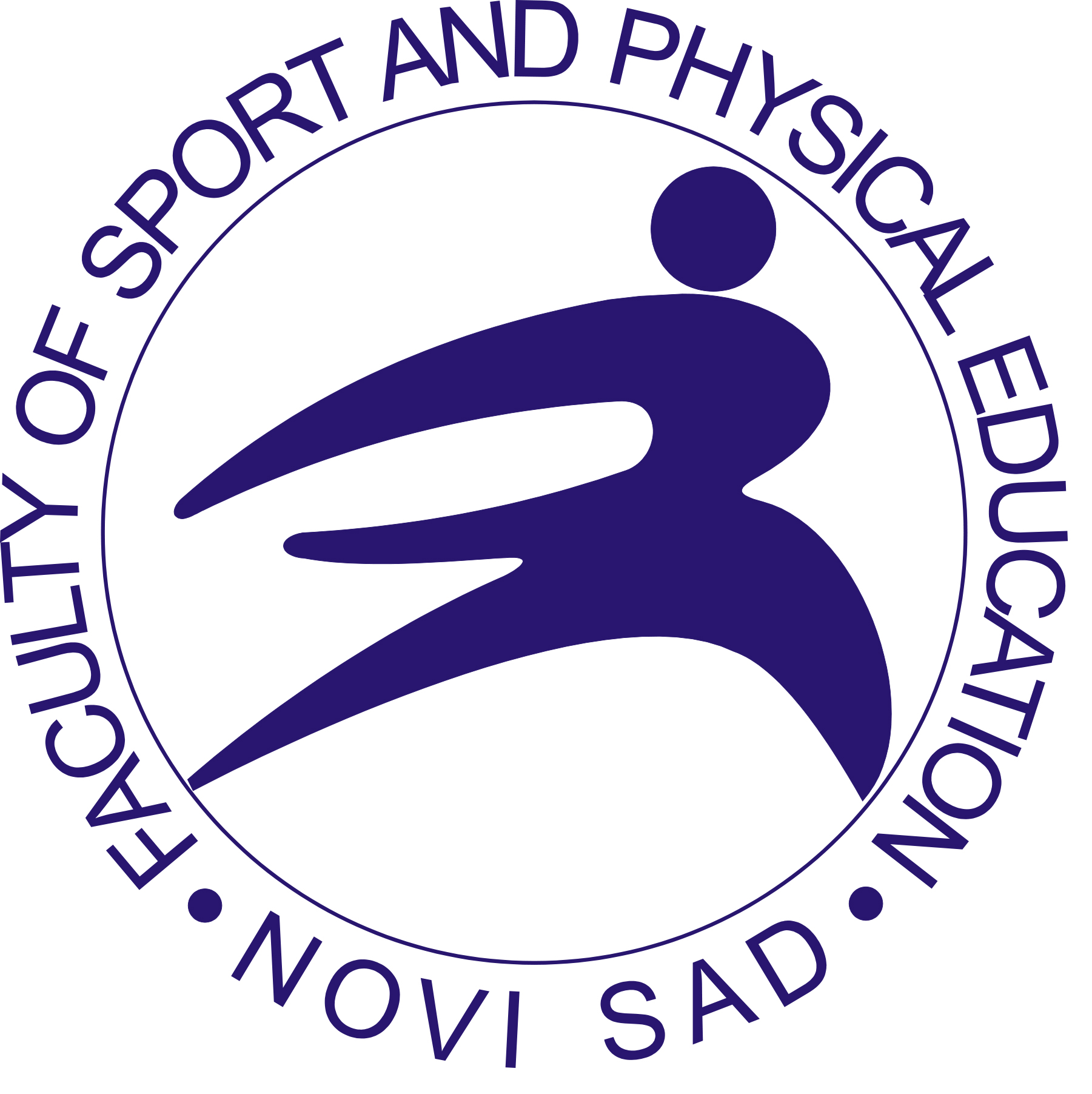
More articles from Volume 5, Issue 1, 2013
EFFECT OF MAXIMUM VOLUNTARY ISOMETRIC CONTRACTION OF ANTAGONIST MUSCLES IN MAX TORQUE AND RATE OF TORQUE DEVELOPMENT OF AGONIST MUSCLES IN TRAINED AND UNTRAINED WOMEN
IMPACT OF RECREATIONAL PHYSICAL ACTIVITY ON WOMEN’S MENTAL AND PHYSICAL HEALTH AND QUALITY OF LIFE
Physique, body composition and physical fitness of Finnish, Hungarian and American adolescents
Anthropometric and cardiovascular characteristics of young elite male handball players according to playing positions
The relationship between coordination, motor abilities and anthropometric characteristics of preschool girls
EFFECT OF MAXIMUM VOLUNTARY ISOMETRIC CONTRACTION OF ANTAGONIST MUSCLES IN MAX TORQUE AND RATE OF TORQUE DEVELOPMENT OF AGONIST MUSCLES IN TRAINED AND UNTRAINED WOMEN
Department of Physical Education and Sport Science, Laboratory of Coaching and Sport Performance, Aristotle University of Thessaloniki , Thessaloniki , Greece
Department of Physical Education and Sport Science, Laboratory of Coaching and Sport Performance, Aristotle University of Thessaloniki , Thessaloniki , Greece
Department of Physical Education and Sport Science, Laboratory of Coaching and Sport Performance, Aristotle University of Thessaloniki , Thessaloniki , Greece
Department of Physical Education and Sport Science, Laboratory of Coaching and Sport Performance , Aristotle University of Thessaloniki , Thessaloniki , Greece
Department of Physical Education and Sport Science, Laboratory of Coaching and Sport Performance, Aristotle University of Thessaloniki , Thessaloniki , Greece
Department of Physical Education and Sport Science, Laboratory of Coaching and Sport Performance, Aristotle University of Thessaloniki , Thessaloniki , Greece
Abstract
The purpose of this study was to compare the effect of antagonist maximum voluntary
isometric contraction on the torque and the rate of torque development of the agonist muscles in
ankle joint in trained and untrained women at 0° angle joint. Twelve untrained and twelve trained
women handball player participated in the study. An isokinetic dynamometer CYBEX Norm was
used for the evaluation of torque. Initially the Maximal Voluntary Isometric Contraction (MVIC)
both for plantar(PF) and dorsi flexors(DF) was evaluated. Afterwards the subjects performed 3
maximal isometric contractions of plantar flexor for 1 second, with 1 minute break between trials.
After 10 minutes complete rest, 3 consecutive maximal dorsiflexion contractions and immediately
after that three maximal PF contraction were performed for the evaluation of the reversal effect
DF on PF. The following parameters were evaluated before and after DF contraction:Plantar
flexion MVIC, Maximal Rate of Torque Development (MRTD), time of MRTD and the RTD
for the period 0–30, 0–50, 0–100 and 0–200 ms after the torque onset. The statistical analysis
showed that the reversal effect was presented only for the trained group for the MRTD and RTD
0–30. These results demonstrated that the existence of the reversal effect of the antagonists is not
appeared always in untrained groups and especially for the joint angle it is affected by the training
background only for selective parameters of muscle contraction.
Keywords
References
Citation
Copyright

This work is licensed under a Creative Commons Attribution-NonCommercial-ShareAlike 4.0 International License.
Article metrics
The statements, opinions and data contained in the journal are solely those of the individual authors and contributors and not of the publisher and the editor(s). We stay neutral with regard to jurisdictional claims in published maps and institutional affiliations.
























